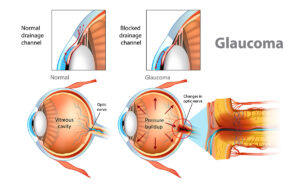Pink eye condition rarely affects your vision, although it can be very irritating. According to the eye doctors at Anaheim Eye, its early diagnosis and treatment can help towards limiting its spread since pink eye can be contagious.
What causes pink eye?
The causes of pink eye may vary depending on the type of conjunctivitis. These types and causes include:
Viral conjunctivitis
This is the most common type of conjunctivitis. Viral conjunctivitis is caused by the adenovirus. This is a group of viruses that are known to cause the common cold as well as many other upper respiratory infections.
It is a highly contagious conjunctival infection that can be easily transmitted from one person to the other simply by hand contact. It usually begins in one eye and then spreads to the other.
A person with an upper respiratory tract infection can cause viral conjunctivitis through coughing or sneezing. Its most known causes include;
- Coming into contact with the body fluids of an infected person usually through hand-to-eye contact
- Sharing of contact lenses that are not properly cleaned
Bacterial conjunctivitis
This is caused by bacteria. The three most common pathogens responsible being Haemophilus influenzae, Staphylococcus, and Streptococcus pneumoniae. These bacteria cause a painful and irritating infection resulting in sore red eyes with a lot of sticky pus. It is very contagious thus easily spread from person to person. Common causes include:
- Poor hygiene practices
- Contact with a person who has the bacteria living in their nose and sinuses
Allergic conjunctivitis
When your body detects an infection, allergens stimulate your body to create histamines and other active substances through mast cells as a means of protection. These histamines cause inflammation which results in allergic conjunctivitis. This causes your eyes to become sore and inflamed with increased secretion of tears. However, allergic conjunctivitis is not contagious.
The common causes of allergic conjunctivitis include:
- Irritation from allergens during hay fever season.
- Irritation from car fumes, cigarette smoke, or toxic substances.
- Animal fur.
- Dust mites.
- Pollen from trees and grass.
What are the symptoms of pink eye?
The most common sign of pink eye is redness of the sclera, the white outer layer of the eyeball. However, symptoms may vary slightly depending on the type of pink eye that you may be suffering from. Some stand out symptoms for different pink eye include:
Viral Conjunctivitis
- Itchy eyes.
- Begins in one eye and may spread to the other eye, usually within days.
- Sensitivity to light.
- Watery discharge from the eye.
- Blurry vision.
- Swelling of the lymph nodes in front of the eyes.
Bacterial Conjunctivitis
- Discharge of a sticky yellow substance in the corner of the eye that can lead to eyelids sticking together.
- Sometimes occurs with an ear infection.
- An uncomfortable, irritating feeling like you have something in your eyes.
- Burning sensation in the eyes.
- Swelling of the conjunctiva.
- Painful eyes.
Allergic Conjunctivitis
- Redness in both eyes.
- Intense itching in both eyes.
- Watery eyes.
- Stuffiness and a runny nose.
- Swelling in the eyes accompanied by an itchy nose, scratchy throat, and sneezing.
What are the risk factors associated with pink eye?
An otherwise healthy person can still contract pink eyes. Therefore, you should try and avoid the risk factors associated with pink eyes, some of which include:
- Wearing contact lenses that do not fit properly or not cleaning them properly.
- Sharing infected eye makeup items.
- Contact with someone infected with viral or bacterial conjunctivitis.
- For allergic conjunctivitis, avoid exposing yourself to something that you have an allergy to.
- Not washing hands with soap and water frequently and correctly.
- Prolonged use of extended-wear lenses.
Pink eye treatment
There are times when you may need to seek medical attention for pink eye. However, this is not always the case. To begin with, effective treatment of pink eye requires you to identify what type of conjunctivitis you have. This will guide you in applying the most appropriate care and treatment.
Viral conjunctivitis
With this type of conjunctivitis, symptoms often clear within 1-3 weeks without specialized medical treatment. However, symptoms may become worse before getting better. Some of the home remedies and over-the-counter treatments include;
- Apply a warm, clean cloth that has been soaked in water to the eye.
- Frequently cleaning the discharge from your eyes with a clean cloth soaked in water or soft cotton wool.
- To reduce irritation, apply decongestant eye drops.
- Avoid the use of contact lenses during the period of infection.
- Frequently lubricate your eyes with eye drops to help reduce the itching sensation.
Bacterial conjunctivitis
Bacterial conjunctivitis is usually self-limiting and generally lasts for 1-2 weeks. This type of conjunctivitis is treated by antibiotic therapy, with the antibiotic being specific for the causative organism. This significantly reduces the duration of symptoms as well as reducing its ability to be transmitted.
For the antibiotic therapy, you can:
- Use antibiotic eye drops to clear the infection
- For severe or persistent infections, use topical antibiotics
Allergic conjunctivitis
- Use eye drops to help dilute the allergen as well as remove it.
- Avoid triggers of your allergy, such as staying indoors when the pollen count is high, avoiding dust.
- Unless symptoms have completely cleared, avoid putting on contact lenses.
- Avoid rubbing your eyes, as this makes the inflammation of your eyes worse.
- To reduce the itchiness in your eyes, cold compress with a clean soaked cloth or soft cotton wool.
- Use antihistamines, whether oral dose or as eye drops, to help block the effects of histamines.
- Use mast cell stabilizers which typically come in the form of eye drops and whose effects tend to last longer
- In severe cases, use corticosteroids to reduce the swelling and decrease the body’s immune response
The good news about pink eye disease is that it is highly preventable and treatable both in children and adults. It can heal on its own without treatment. However, treatment is usually advisable to shorten the period of symptoms, the severity and to prevent the spread of the infection as far as viral and bacterial conjunctivitis are concerned.[/vc_column_text][/vc_column][/vc_row]




